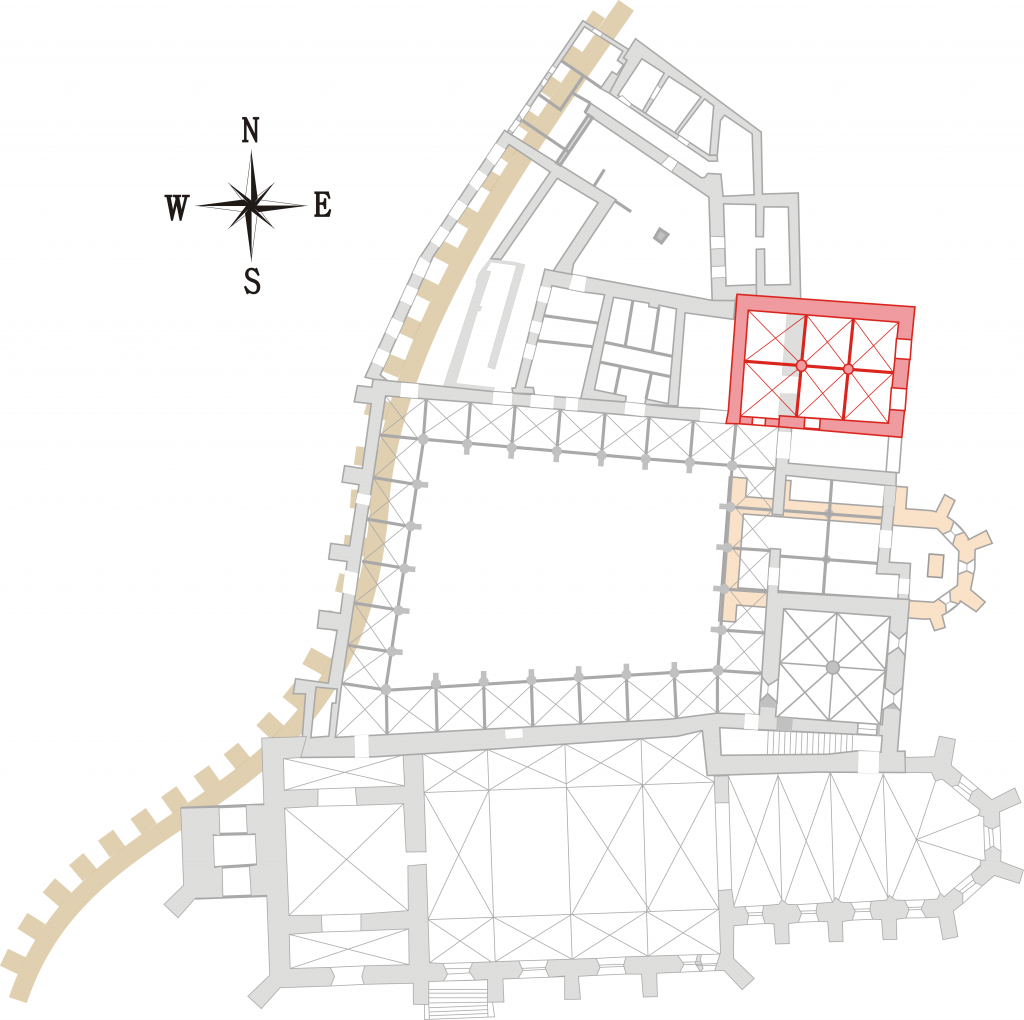Refektár
Ako vám zdravie dovolí, ovládajte svoje telo pôstom a zdržanlivosťou v jedle a pití. Tí, ktorí sa nemôžu celý deň postiť, môžu si vziať niečo na jedenie pred hlavným jedlom, ktoré sa požíva neskoro popoludní (večer). Môžu tak urobiť iba okolo poludnia. Chorí však môžu niečo zjesť v ktorúkoľvek hodinu dňa. Od začiatku až do konca stolovania pozorne počúvajte čítanie bez vyrušovania či protestovania, pretože nemáte zadosťučiniť iba vášmu fyzickému hladu, ale máte tiež horlivo túžiť po slove Božom. (Regula sv. Augustína z Hippa, kap. III., čl. 1, 2, r. 397)
A nech sa postia od sviatku Všetkých svätých až do Narodenia Pána. Tých však, čo zachovávajú dobrovoľne svätý pôst, ktorý sa začína po Zjavení Pána a trvá nepretržite štyridsať dní, ktorý Pán posvätil svojím svätým pôstom (porov. Mt 4, 2), nech Pán požehná; ktorí ho však nechcú zachovávať, nie sú povinní. Avšak druhý pôst až do vzkriesenia Pána nech zachovávajú. Inokedy, okrem piatka, nie sú povinní sa postiť. Avšak v čase zrejmej potreby bratia nech nie sú povinní telesne sa postiť. (II. regula sv. Františka z Assisi, hlava III., r. 1223)
Refektár – spoločná kláštorná jedáleň – býval v stredovekých kláštoroch situovaný v južnej časti klauzúry. V prípade levočského kláštora tomu bolo inak. Pôvodný refektár bol zrejme drevený a o jeho situovaní nevieme nič. Je tiež možné, že funkciu jedálne plnilo dormitórium (neskôr prestavané na sakristiu). Nový refektár vznikol vo východnom krídle rodiaceho sa kláštora, v susedstve kapitulnej siene a úzkeho vstupného koridoru. Zo severu pôdorysne uzatváral ambit a svojou západnou časťou ohraničoval jeho pokračovanie. Susedil s hospodárskymi časťami kláštora, umiestnenými severne od ambitu – kuchyňou, komorami, zásobárňami a skladmi, ktoré boli počas celého obdobia stredoveku drevené. Refektár je zaklenutý na dva osemboké piliere a vyznačuje sa zachovanými pôvodnými architektonickými článkami, súčasťami krížovej klenby.
Refectory
Subdue the flesh, so far as your health permits, by fasting and abstinence from food and drink. However, when someone is unable to fast, he should still take no food outside mealtimes unless he is ill. When you come to table, listen until you leave to what is the custom to read, without disturbance or strife. Let not your mouths alone take nourishment but let your hearts too hunger for the words of God. (Rule of St Augustine of Hippo, chap. III., art. 1, 2, y. 397)
And let them fast from the feast of All Saints until the Nativity of the Lord. But the holy Lent which begins from Epiphany and continues for forty days, which the Lord has consecrated by His holy fast (compare Matt. 4, 2), may those who keep it voluntarily be blessed by the Lord and those who do not wish may not be constrained. But they must fast during the other one until the Resurrection of the Lord. At other times, however, they shall not be obliged to fast, except on Fridays. But in time of manifest necessity the brothers shall not be bound to corporal fasting. (St Francis of Assisi. Second Rule of The Friars Minor. The Writings of Saint Francis of Assisi /1906/ 1/IV, 3)
The refectory – a common monastery dining room – in medieval monasteries used to be located in the southern part of the enclosure. In the case of the Levoča monastery, it was different. The original refectory was probably wooden and its location is unknown. It is also possible that the dormitory (later rebuilt into a sacristy) served as a dining room. The new refectory was created in the eastern wing of the nascent monastery, neighbouring the chapter hall and the narrow entrance corridor. From the north, it closed the cloister and bounded its continuation with its western part. It was next to the practical parts of the monastery, located north of the cloister – the kitchen, chambers, storerooms and warehouses, which were wooden throughout the Middle Ages. The refectory is vaulted on two octagonal pillars and is characterized by preserved original architectural elements, part of the groin vault.

